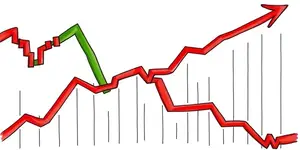
In the ever-shifting tapestry of global markets, understanding how assets move in relation to each other can mean the difference between resilience and vulnerability. By monitoring cross-asset correlations, investors gain a lens into the hidden dynamics of market behavior and can anticipate emerging threats before they crystallize.
From equities to bonds, commodities to currencies, every asset class weaves its own story. Yet when stress hits, these stories often converge, creating ripples that can become a tidal wave.
At its core, a correlation measures the degree to which two assets move in tandem. A coefficient of +1 signals a perfect positive relationship, while –1 indicates they move in exact opposition. A zero reading implies no discernible link.
Grasping this concept is crucial for informed portfolio decisions. It helps in building resilient portfolios, calibrating risks, and developing robust trading strategies that can withstand turbulent times.
Quantifying correlations requires both statistical rigor and practical insight. Here are the most widely used methods:
Each technique offers unique vantage points. Rolling windows show gradual trends, whereas dynamic models can respond quickly to sudden shifts.
Diversification hinges on combining assets that do not move in lockstep. When correlations are low or negative, portfolio risk diminishes. Yet the promise of diversification can falter when correlations spike under duress, a phenomenon often dubbed correlation breakdown during crises.
For instance, between 2011 and 2020, the correlation between the S&P 500 and REITs averaged +0.70. In contrast, equities and investment-grade bonds held a modest –0.06. These disparities highlight opportunities to construct more balanced portfolios—until stress unites them.
History reveals a familiar narrative: calm seas give way to storms, and assets that once behaved independently start to synchronize. During the 2008 Financial Crisis and the 2020 COVID-19 panic, equities, credit instruments, and even some commodities surged to correlation levels never seen in tranquil times.
Such convergence can catch market participants off guard, erasing diversification benefits almost overnight. Monitoring these shifts becomes essential for spotting early signs of systemic risk.
Stress testing scenarios—asking what happens if equity-bond correlation flips positive—can unveil vulnerabilities before they inject widespread detriment to portfolios.
Integrating cross-asset correlation analysis into portfolio design can elevate performance and shore up defenses. Consider these practices:
Systematic funds often harness these insights, dynamically shifting exposures to capture attractive risk-reward opportunities and mitigate downside drawdowns.
Beyond constructing portfolios, continuous monitoring is vital. Employ scenario analysis to model how shifts in correlations affect portfolio metrics under different market environments. Use sensitivity analysis to gauge how incremental changes in correlation translate into potential losses or capital requirement spikes.
Emerging risk indicators often manifest as subtle changes in correlation regimes. Sudden upticks between previously low-correlated assets can signal building financial imbalances or contagion channels opening. Detecting these signals early allows risk managers to adjust exposures, rebalance portfolios, or deploy hedges proactively.
Real-world data underscores the dynamic nature of correlations. A table of key historical values offers concrete perspective:
Examining these figures paints a vivid picture of how stress can transform relationships between asset classes. A once-beneficial hedge might evaporate, exposing portfolios to amplified shocks.
To harness the full potential of correlation analysis, firms should craft a structured monitoring framework:
Such a framework instills discipline and ensures that correlation insights drive timely, data-backed decisions.
In a world where markets are intricately connected, overlooking cross-asset correlations is akin to sailing blind into a storm. By equipping themselves with robust correlation analytics, investors and risk managers can transform uncertainty into opportunity.
Proactive monitoring not only shields portfolios from unseen risks but empowers decision-makers to capture emerging trends. As correlations ebb and flow, the vigilant will navigate volatility with confidence, turning potential perils into pathways for growth.
Embrace the power of correlation intelligence to craft resilient portfolios, stay ahead of systemic shocks, and ultimately, realize long-term investment success.
References













